Orbea has been making strides into the trail and enduro market, with a couple of cracking bikes launched recently: the Rallon and Occam. While the Wild FS has been in its range for a little while, this latest version looks to put its e-offering on a similar performance level as the aforementioned 'analogue' bikes.
Orbea has taken advantage of the latest motor from Bosch, which is now lighter, smaller and better performing on the trail. It's also included it in the MyO program, which enables customers to pick and choose between a million colour combos for the frame and logos at no additional (financial) cost.
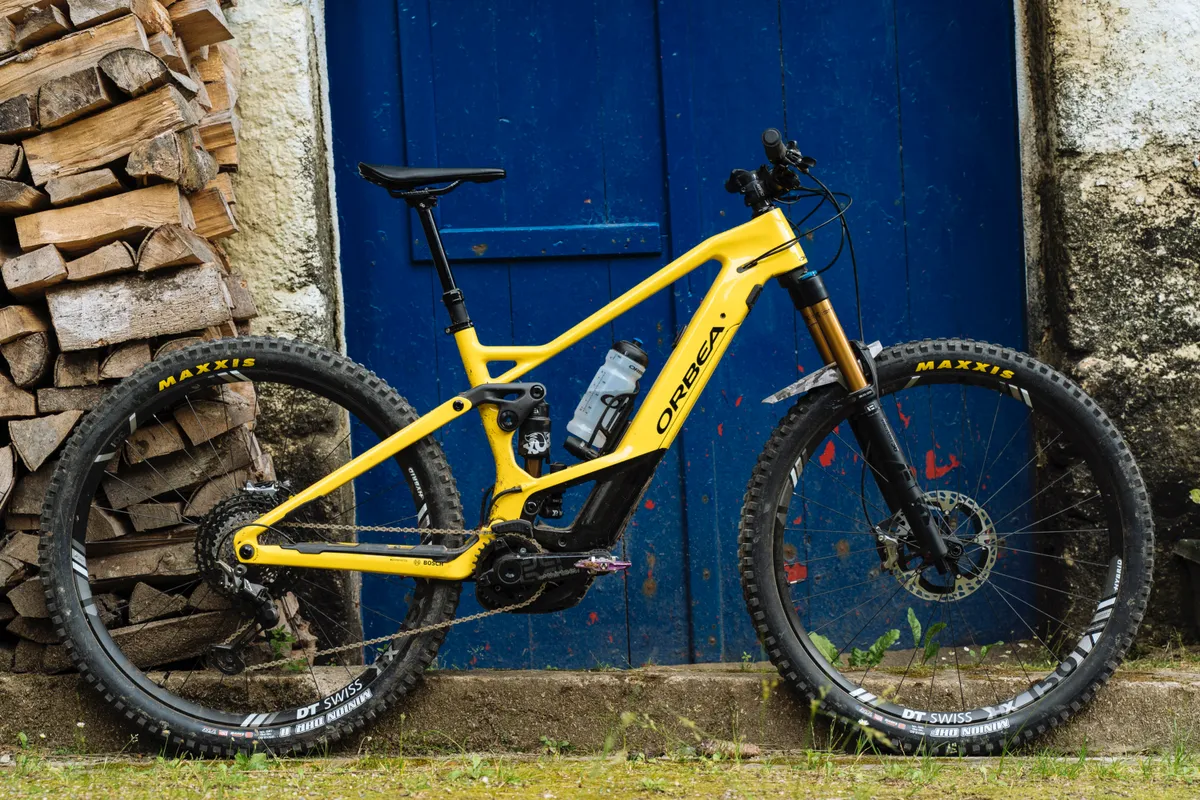
For full details of the bike, give our full rundown of the Orbea's 160mm 29er Wild FS a read.
Orbea Wild FS M-LTD frame
Orbea's top-line model comes with a full carbon frame, including the rocker link, which is said to drop 150g from the frame alone.
The frame has all the necessary 'upgrades' to make it e-MTB-ready: stiffer tubes, bigger bearings and reinforced rear triangle structures. This obviously will quell buyers' nerves over structural solidity when purchasing.
The battery cover is also carbon on the top-level bike, presumably saving some weight over an injected plastic version.
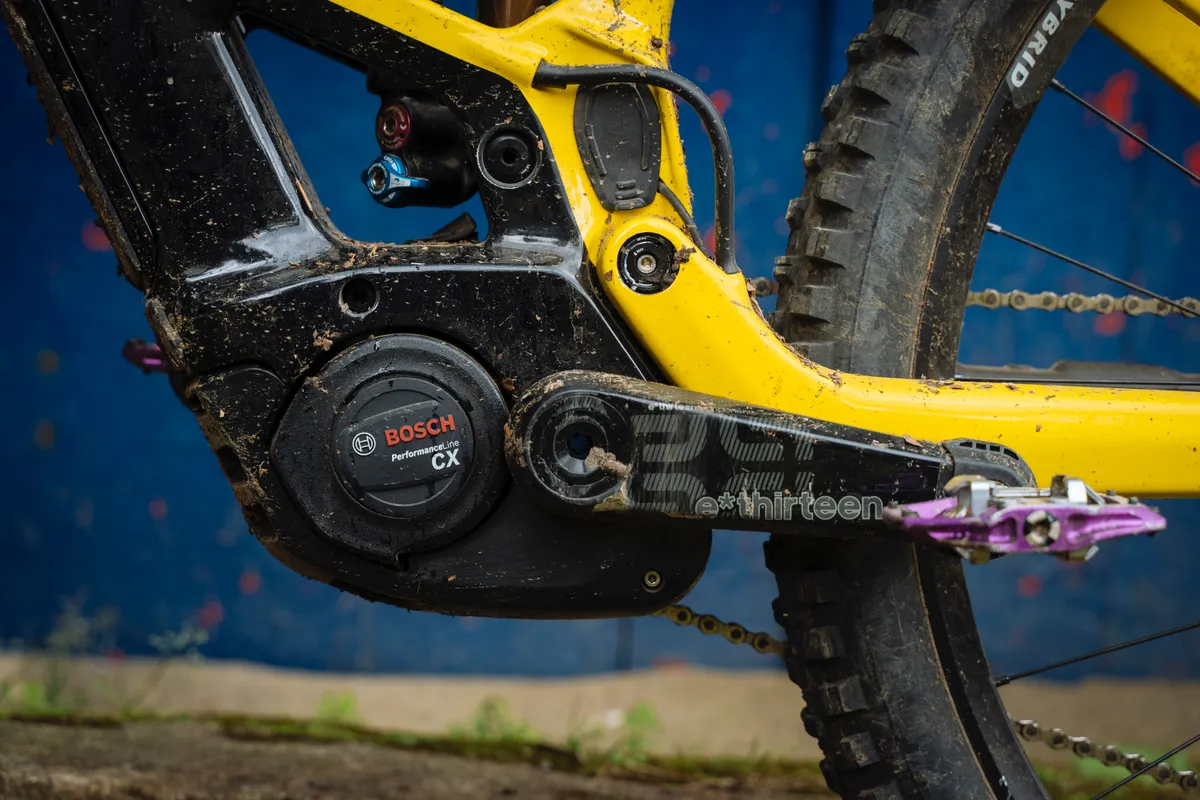
Orbea uses Bosch's new Performance CX motor, which it conceals in the down tube. Releasing the battery requires unlocking with a key in the side of the down tube and Orbea has added a neat key holder into the headset's preloading top-cap.
Under the motor there's polymer protection for the motor. Apparently this is super strong and it seemed to shrug off the odd rock-strike I suffered during testing with little complaint.
Within the frame, above the battery, there's a foam-backed sheath to help prevent cable and battery rattle, and it's also easily moveable to aid cable maintenance.
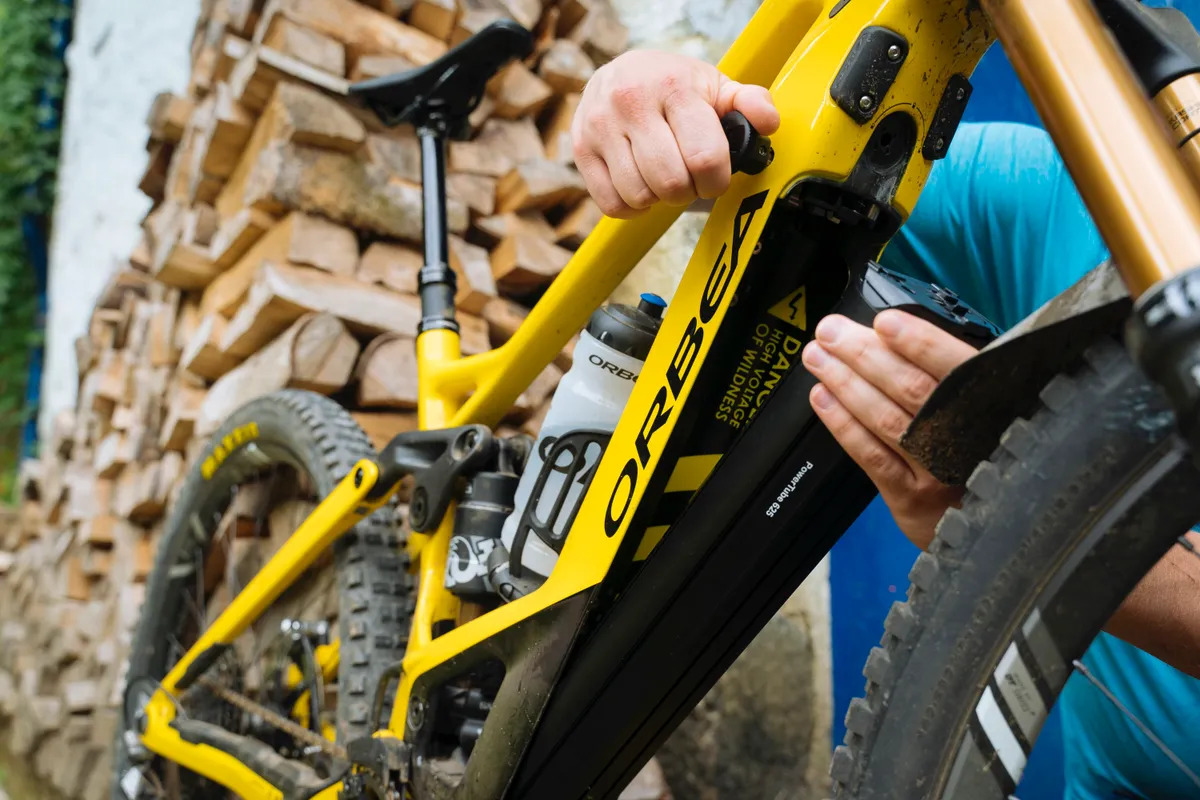
The frame has bottle cage mounts as well as bump stops to prevent the fork damaging the frame in a crash. This is doubled up with a knock-block type headset that provides 164 degrees of fork rotation – again to prevent damage. Fortunately, there is enough twist to make storing the bike with the front wheel off fairly space-friendly, unlike some other bikes with similar features (Trek, I'm looking at you).
Other details seem fairly well thought out. For example, there's a rubber cover for the battery charging point that's further protected by a mini-fin, which Orbea promises will help keep crud out (the Basque region, where the bikes are designed, is pretty wet and muddy).
Orbea hasn't gone crazy with the geometry, which isn't too surprising considering e-bikes typically have a low-down centre of mass that boosts stability rather than relying on super-stretched geometry.
The size Large that I tested has a reach of 450mm, mirrored by 455mm chainstays. The head angle is fairly slack at 65.5 degrees, while the seat angle is up at 76 degrees.
The standover is a generous 740mm, while the stack comes in at 630mm. As I'll mention later, I also rode an XL for comparison, which has a correspondingly longer 480mm reach. And, at lunch, on the first day's riding, I swapped the stem from 50mm to 35mm.
Orbea Wild FS M-LTD kit
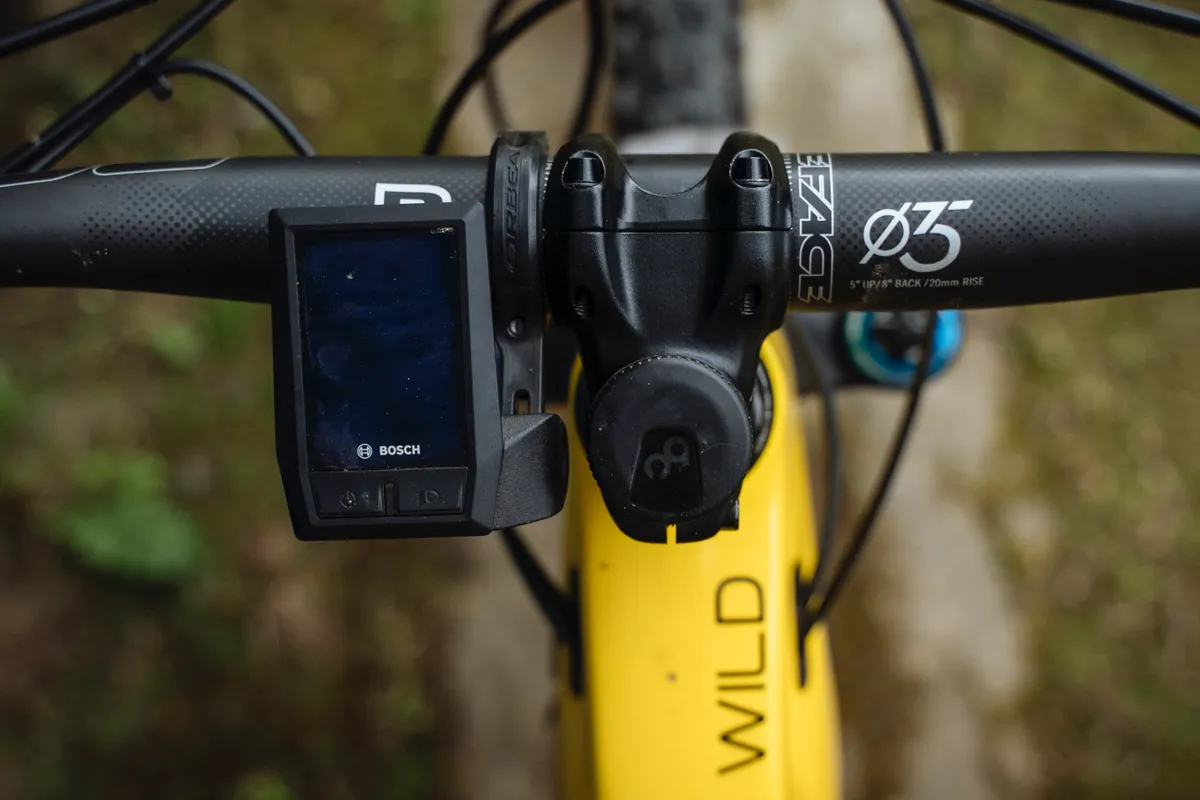
The M-Ltd version of the Wild FS gains Bosch's 624Wh battery in the down tube and its new on-bar controller and display system, which gives easy access and a clear indication to a range of power modes and information about your ride.
The suspension is provided by Fox, with a GRIP2 damped e-bike-specific 36 fork up front with 160mm of travel. The e-bike-specificness comes from a stiffer chassis, which uses the air spring from a Fox 34 fork and, as such, volume spacers are the same as the 34.
At the back, I rode a Fox Float X2. This air-sprung shock gives plenty of tunability and is one of the options when the bike is purchased directly from Orbea. However, the stock 'option' on the bike is the DHX2 coil shock.
At purchase, there's information available to guide which spring should be fitted, but this does add an extra layer of complication.
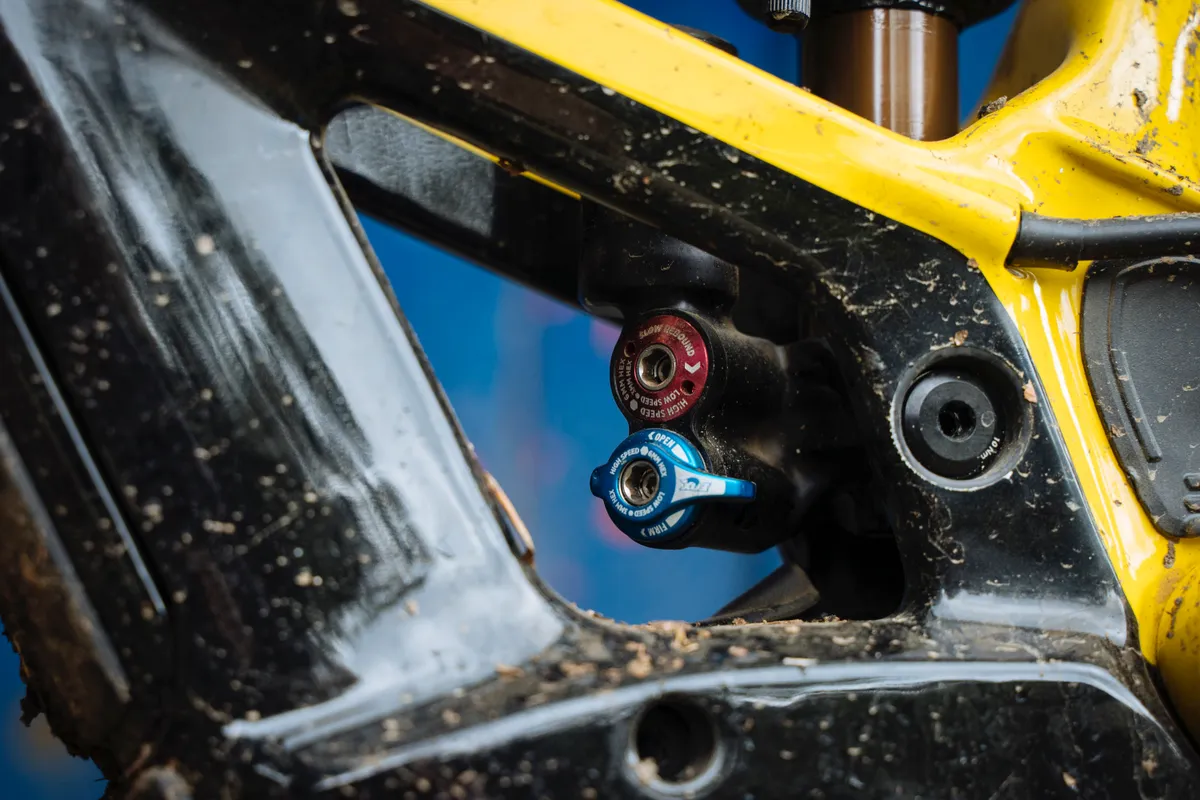
The Bosch motor drove a largely Shimano XTR drivetrain, but short 160mm ethirteen Race Carbon cranks were fitted. The drivetrain was accompanied by a pair of four-pot XTR brakes with 200mm rotors front and rear.
The bike rolls on a set of e-bike friendly DT Swiss Hybrid 1501 Spline wheels, and 2.6in Maxxis Minion triple compound tyres, with the new tougher EXO+ casing.
Finishing kit comprises of a RaceFace cockpit (Next R 800mm bars and Aeffect stem), with Orbea's own OC2 dropper and a Fizik saddle. An E13 chainguide keeps the chain secure.
Orbea WildFS M-Ltd ride impressions
The first thing I noticed about the Wild FS was just how plush the rear suspension is.
With the sag metered out to Orbea's engineers' recommendation, and damping set fairly low, I didn't need much more than a grassy car park spin to know that the bike was going to provide a very, very smooth ride on at least small to medium-sized chatter.
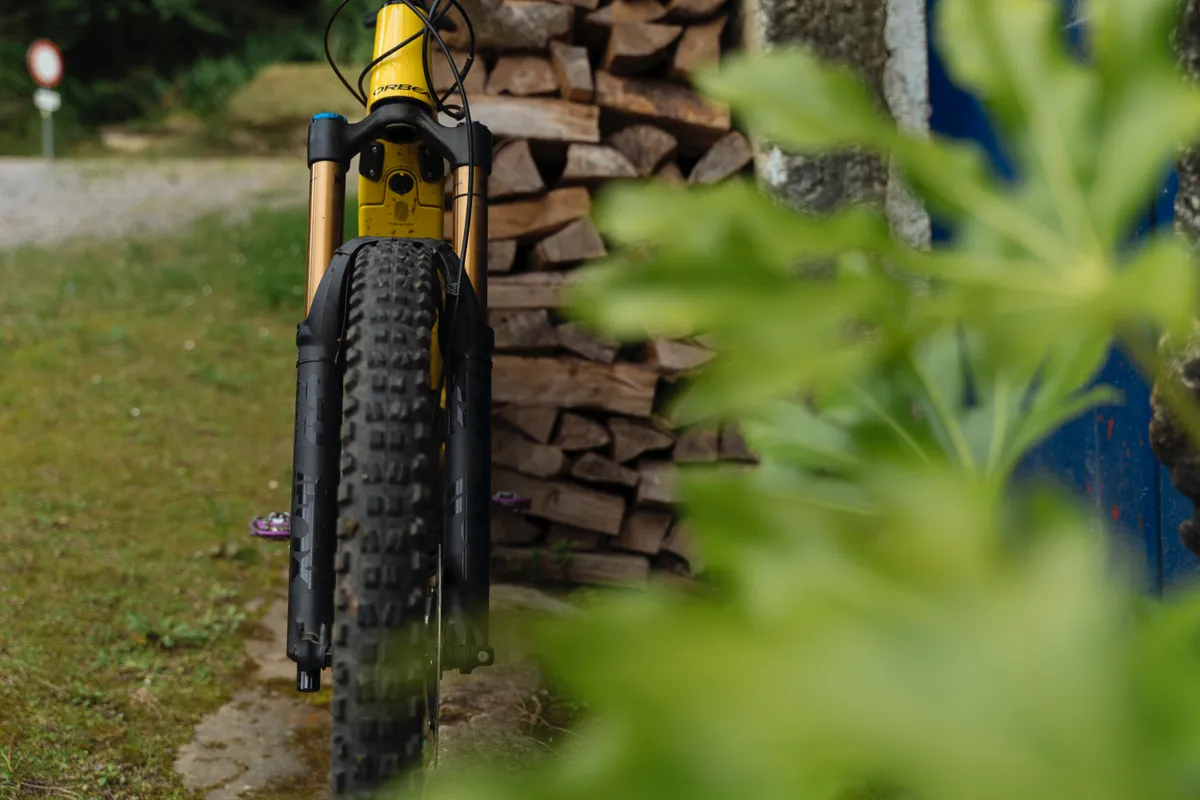
I rode a lot of loose, rough, singletrack climbing during testing and the Wild FS was almost impeccable here.
The new Bosch motor impressed, with a lot of easily manageable torque that gives power at what feels like a wider range of cadences, making technical climbs that little bit easier.
Shifting from mode to mode becomes fairly intuitive, with the colour display helping both show the mode and the level of assistance being given.
The e-MTB mode feels very natural both in the torque on offer and the way in which it is delivered. Apparently Bosch has increased the number of sensors in the system and that's noticeable. On technical climbs it was very hard to get the motor to stumble with its power input.
While the motor undoubtedly helps no-end with climbing, there's plenty of other aspects that helped the Wild FS get to the top of the hill.
The steep seat angle puts your hips in a good place over the pedals, which allows you to easily get the power down when needed. At the same time the short 160mm cranks mean pedal clearance is decent through chunky terrain.
That said, the short reach is noticeable. On longer drags, the cockpit feels a touch cramped and when approaching really tight corners, with the bars low over the head tube, my knees hovered fairly close to the bars' controls.
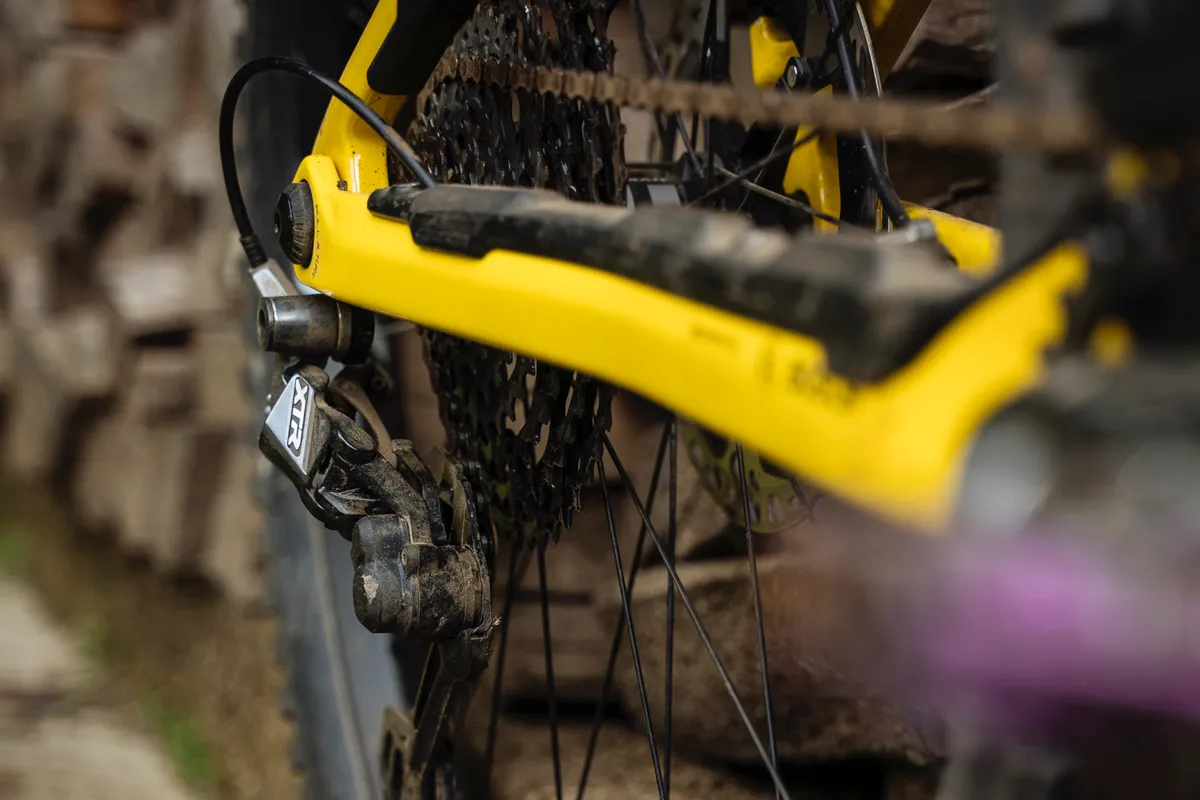
While a number of e-MTBs out there, such as the Canyon Spectral:ON and YT Decoy have a 650b x 2.8in tyre out back with a 29in wheel up front, Orbea's 29 x 2.6in combo seemed to offer almost as much grip at the back, with the addition of a precise feel and (in my experience) less puncture risk – especially with the new EXO+ casing.
The final piece of the climbing puzzle is the suspension. That super-supple feeling just gives bucket-loads of traction. The rear wheel is solidly planted to the ground and alows you to get the most out of the tyres and motor, meaning no Watts, whether human or electrically powered, are wasted.
With the motor helping out with climbing, any potential wallow is effectively cancelled out. Even on the steepest of drags, where out of the saddle climbing can still be done on an e-bike, there's just enough stability for the bike to feel well-propelled along.
Again, the suspension comes to the fore when the trail descends. The buttery smooth feeling through the back-end helps boost confidence, as that rear wheel sticks to the floor and late braking and aggressive cornering is easily achieved. Hammer into bigger hits and the Wild FS will push through its 160mm of travel, but with a very progressive stroke, it was rare that I touched the end of the bike's travel.

To counter this, on flatter trails I did feel that the super-active rear-end perhaps doesn't suit those looking for a playful feel to their suspension.
I did add 10psi to the rear shock to give myself a bit more support from the spring, and also added a couple of clicks of compression damping to give me more to push against, but on initial feel, this is a bike that's goal is to fully isolate you from the trail rather than give you those little bits of feedback that (I find, at least) add a touch more excitement to the ride.
Back to steeper trails, though, and the suspension yet again makes sense. Some will argue that the 450mm reach on the Large is rather conservative, especially for a 150mm bike, and in some ways I agree. If you're looking for a hard-charging, enduro-race focussed e-bike you might want to look at other options, especially if you prefer the feel of a longer reach regular bike, but the weight and the location of the weight of an e-bike does boost stability in loose, steep situations.
Pair this with a fairly slack head angle and a supportive, controlled fork with a sticky tyre up front, and I never found myself particularly lacking in confidence.
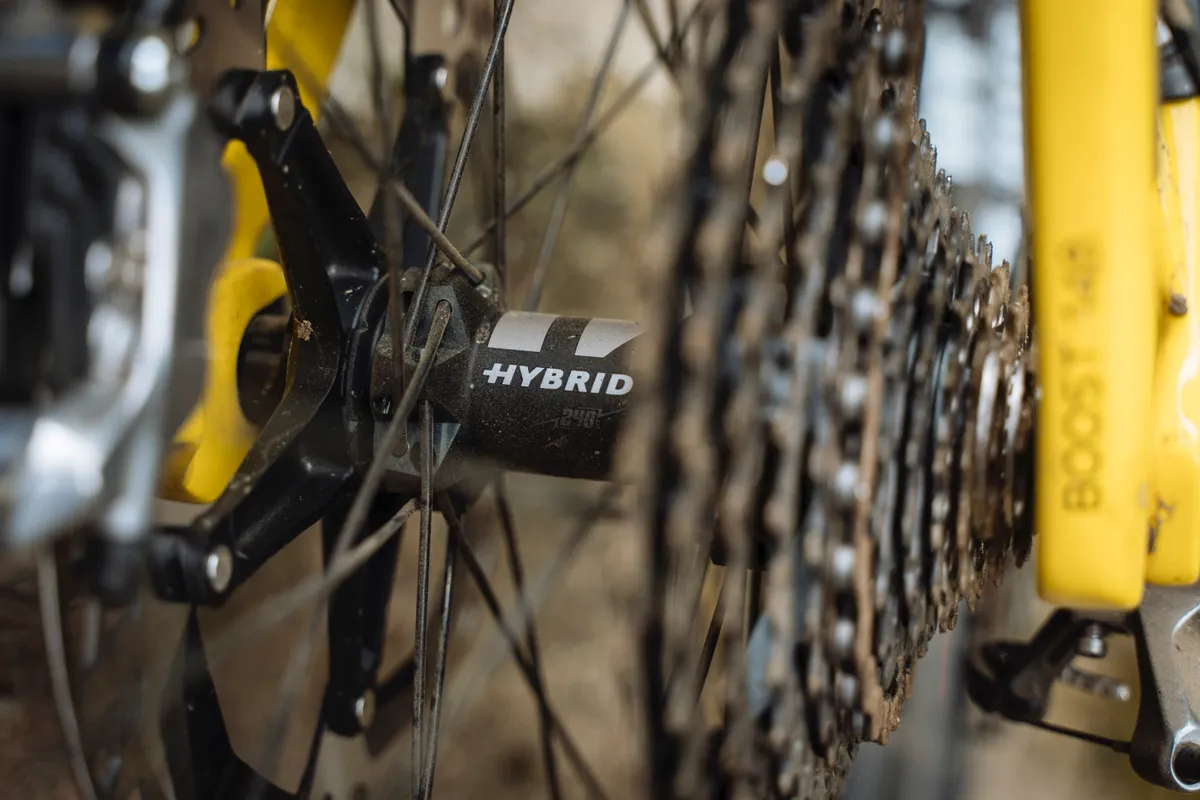
To answer my questions over the shape of the bike, I spent a day riding an XL that had a much longer reach.
On the roughest and steepest tracks this did make a difference, and the bike felt incredibly confident when I let off the brakes. However, take the bike up technical climbs (half the fun of an e-MTB, in my opinion) and the XL felt a bit more of a handful than the Large I'd ridden previously.
There is a 30mm difference in reach between the two sizes, though, which is fairly substantial.
